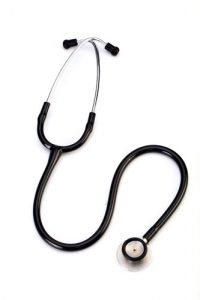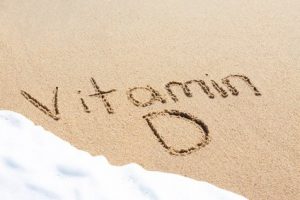A Bone Health Lifestyle
Author: Julie Donnelly, LMT – The Pain Relief Expert
Editor: Dr. Steve Chaney
 Fall is glorious in my book. I was up in New York a few weeks ago, and the trees were just changing – I was about a week too early for the best colors, but it was still beautiful. Then I flew out to Lake Tahoe, and it was really beautiful there. The air was crisp and clean, and I loved all the fall decorations.
Fall is glorious in my book. I was up in New York a few weeks ago, and the trees were just changing – I was about a week too early for the best colors, but it was still beautiful. Then I flew out to Lake Tahoe, and it was really beautiful there. The air was crisp and clean, and I loved all the fall decorations.
In Florida we are entering our most wonderful time of year. It’s starting to get cooler, the humidity is going down, and hurricane season is over. Hooray! It’s great to be outdoors again!
Please remember all the people who are still going through very difficult times in the Bahamas. Many people have lost their homes, their workplaces and the income that supports them, and some have lost loved ones. A devastating loss.
We here in the USA were blessed that Dorian didn’t come any further west and do the same thing to Florida, Georgia, and the Carolinas. I wanted to share what I have with the people who now have nothing. That made me search for places I trust that will send all the money I donate. In case you want to help, and you don’t have a favorite charity, I want to share those places with you:
https://disaster.salvationarmyusa.org
http://secure.americares.org/help/now
https://www.mercycorps.org/articles/hurricane-dorian-bahamas#mercy-corps-helping
Preventing And Reversing Osteoporosis
 Weight-bearing exercise builds strong bones. That statement is so common that just about everyone knows they need to exercise for strong muscles and bones, and for all the good it does for just about every system in the body. And, we are what we eat, so nutrition is vital.
Weight-bearing exercise builds strong bones. That statement is so common that just about everyone knows they need to exercise for strong muscles and bones, and for all the good it does for just about every system in the body. And, we are what we eat, so nutrition is vital.
Do you like to exercise? Some people are almost addicted to exercise, but I’m not one of them. I go to the gym and I have a fitness trainer to help me stay on track, but it fits right in with my eagerness of going to the dentist. I must say, I’d like that to change, and maybe if I can find a workout partner, it will.
Meanwhile I need to do something because I’ve been told I have osteoporosis. Yikes! One thing for sure, I’m not taking any type of medication. I truly believe there is another solution.
While I’m not an exercise nut, I do love nutrition and I know that the body is so adaptable that if it’s given the proper nutrition, it can do miracles. I believe nutrition and exercise can reverse this osteoporosis diagnosis.
A Bone Healthy Lifestyle

The first thing I did was contact my friend, Steve Chaney, PhD, author of the weekly blog “Health Tips From The Professor. He pointed me to an article he had written on a “Bone Healthy Lifestyle”. Here is a brief summary:
- Exercise, calcium, and vitamin D are all essential for bone formation. If any of them are missing, you can’t form healthy bone. The reason so many clinical studies on calcium supplementation and bone density have come up empty is that exercise, or vitamin D, or both were not included in the study.
- Get plenty of weight bearing exercise. This is an essential part of a bone healthy lifestyle. Your local Y can probably give you guidance if you can’t afford a personal trainer. Of course, if you have physical limitations or have a disease, you should consult with your health professional before beginning any exercise program.
- Get your blood 25-hydroxy vitamin D level tested. If it is low, take enough supplemental vitamin D to get your 25-hydroxy vitamin D level into the adequate range – optimal is even better. Adequate blood levels of 25-hydroxy vitamin D are also essential for you to be able to utilize calcium efficiently.
- Consume a “bone healthy” diet that emphasizes fresh fruits and vegetables, minimizes meats, and eliminates sodas and other acidic beverages. For more details on whether your favorite foods are acid-forming or alkaline-forming, you can find plenty of charts on the internet.
- Minimize the use of medications that adversely affect bone density. You’ll need to work with your doctor on this one.
- Consider a calcium supplement. Even when you are doing everything else correctly, you still need adequate calcium in your diet to form strong bones. Dr. Chaney wasn’t advocating a “one-size fits all” 1,000 to 1,200 mg/day for everyone. Supplementation is always most effective when you actually need it. For example:
o If you are not including dairy products in your diet (either because they are acid-forming or for other health reasons), it will be difficult for you to get adequate amounts of calcium in your diet. You can get calcium from other food sources such as green leafy vegetables. However, unless you plan your diet very carefully you will probably not get enough.
o If you are taking medications that decrease bone density, that may increase your need for supplemental calcium. Ask your pharmacist about the effect of any medications you are taking on your calcium requirements.
- If you do use a calcium supplement, make sure it is complete. Don’t just settle for calcium and vitamin D. At the very least you will want your supplement to contain magnesium and vitamin K. Dr. Chaney recommends that it also contain zinc, copper, and manganese.
Between increasing my exercise and ramping up all the nutrients that build bone, I just know that by this time next year I’m going to be surprising the doctor with my great health



